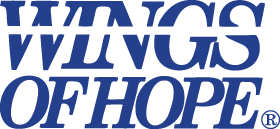IAI’s TaxiBot®, A SEMI-ROBOTIC PILOT CONTROLLED VEHICLE FOR DISPATCH TOWING, MAKES HISTORY
Written by thomas · Filed Under Aeronautics NewsNovember 4, 2014
Taxibot® Background:
Airplanes were made to fly, not to taxi
IAI’s innovative TaxiBot® introduces a new concept for an alternative taxiing system for commercial airplanes. TaxiBot is a semi-robotic pilot controlled vehicle designed to transport airplanes from the airport gate to the runway and back, without using the airplane’s engines.
TaxiBot provides the required power to move the airplane and has achieved a world record of 23 knots taxiboting with fully loaded Boeing 737 and Airbus A320 airplanes, without the need to change or replace the airplane’s APU (auxiliary power unit).
�
TaxiBot can be used with either narrow or wide body airplanes, and does not increase the airplane’s weight or reduce its cargo space, as no modifications to the airplane’s systems are required. TaxiBot allows the pilot full control of the system, and operation is performed using the airplane’s tiller and brake pedals as in regular taxiing. Multiple patents were filed and granted worldwide for TaxiBot systems and concept.
Commercial airplane engines are very efficient in flight at high altitudes, but not when operated on the ground. During taxiing these engines burn considerable amounts of fuel, emit substantial amounts of CO2, are vulnerable to Foreign Object Damage (FOD) and create significant noise in airports and their surrounding areas.
The WB TaxiBot started dynamic testing at the New TLD factory in Sorigny, France, inaugurated on September 2014 for TaxiBot production. The WB TaxiBot will be suitable for all twin aisle airplanes; A330, A340, A350, A380, B747, B767, B777 and B787. The certification tests of the WB TaxiBot with a WB airplane is schedule for the third quarter of 2015 aiming to get STC for the first WB airplane type by the end of the year.
�
A typical Boeing 747 or Airbus 320 fuel consumption for a seventeen-minute taxi before takeoff is approximately one ton of fuel (1,250 liters). TaxiBot operation will reduce it by eighty-five percent. In comparison, for the same taxiing procedure, TaxiBot itself consumes only twenty-five to thirty liters of fuel. The same B747 or Airbus 320 airplane’s engines emit 3.2 tons of CO2, while TaxiBot emits less than sixty kgs. This will result in savings of millions of dollars a year for airline operators and billions of dollars a year for the commercial airline industry.
�
Overall worldwide taxiing costs in 2020 are estimated at over $8.4B per year. Taxiing using TaxiBot has the potential to reduce these costs to less than $3B per year.
�
Substantial reduction in CO2 emissions is achieved by using TaxiBot, regardless of the flight range. The system reduces cases of FOD by fifty percent. In addition, recent tests in Frankfurt have shown that taxiing with TaxiBot reduced the noise level by fifty percent, compared to normal taxiing with jet engines. Moreover, the noise level is reduced to below eighty db. which is considered to be safe for humans.
TaxiBot provides an economic and effective solution to the current taxiing methods by using hybrid diesel electric power instead of hydrostatic drive; this results in optimal efficiency, maintainability and avoidance of hydraulic leaks on airports’ tarmacs.
�
» Próximo Post - Participación de FARO en EMAF 2014 Oporto
« Post Aneterior - 328 Support Services GmbH announces a major upgrade of Dornier 328 avionics system.
Comments
¿Tiene algo que decir?
You must be logged in to post a comment.







